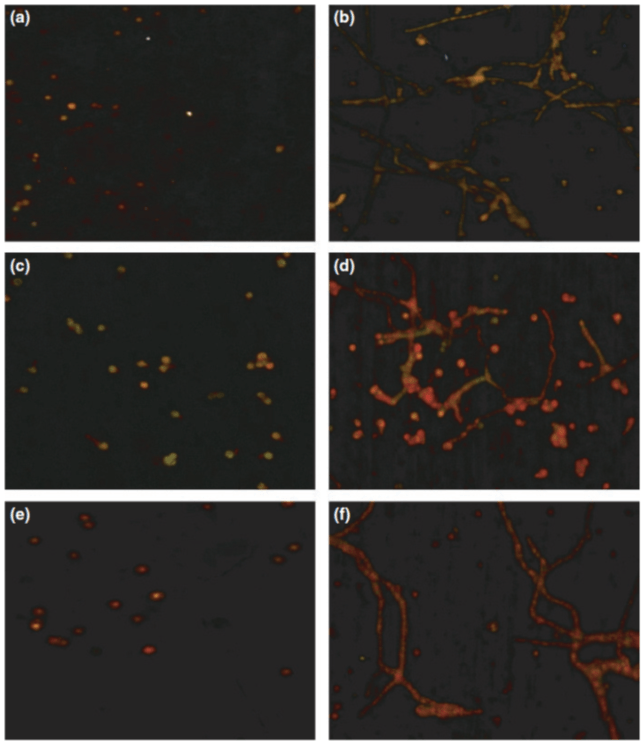COPPER RESOURCES

Copper has been proven to inactivate some of the most common microbial contaminants found in crops. Some of those include:
Bacteria
- Klebsiella (bacteria)
- Carbapenem-resistant Enterobacteriaceae or CRE (bacteria)
- Acinetobacter baumannii (bacteria)
- Pseudomonas (bacteria)
- Enterobacter (bacteria)
- Escherichia coli O157:H7 (bacteria, AKA E. coli)
- Salmonella enterica (bacteria)
Molds (see articles on next page)
- Aspergillus (fungi)
- Fusarium (fungi)
- Penicillium (fungi)

Figure 1
Aspergillus niger spores after 7 days exposure on copper (C11000) (a) and aluminum (b); Aspergillus flavus after 4 days exposure on copper (c) and aluminum (d); and Aspergillus fumigatus after 4 days exposure on copper (e) and aluminum (f) assessed using epifluorescence microscopy. Spores or hyphae stained orange to red are metabolically active and those remaining green to yellow are not active.

Read more about copper and its anti-microbial properties by following the links below.
- Article 1: Letters in Applied Microbiology ISSN 0266-8254
- Article 2: Microbial Contaminants in Cannabis
- Article 3: Proper Use and Care of Antimicrobial Copper Alloys












